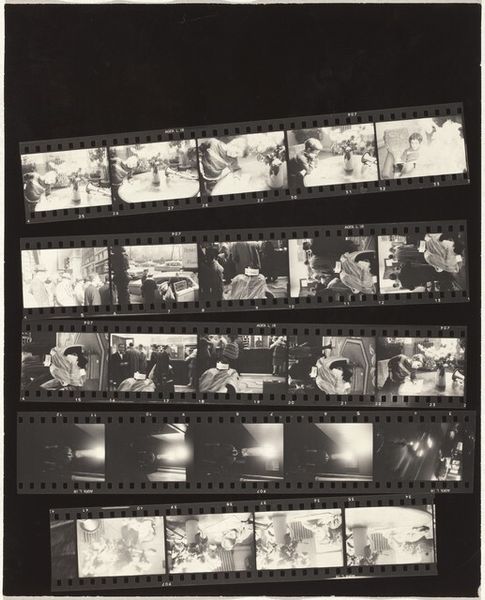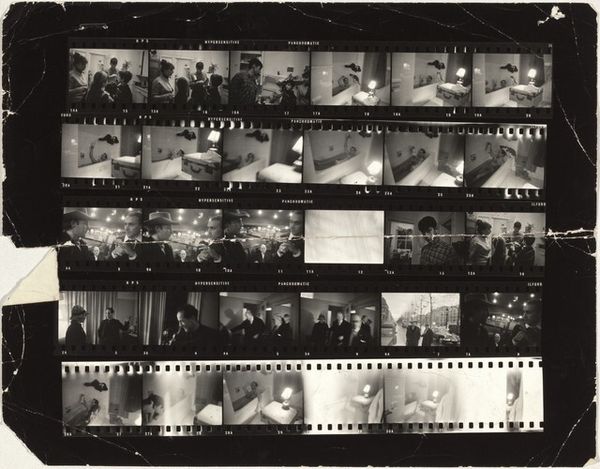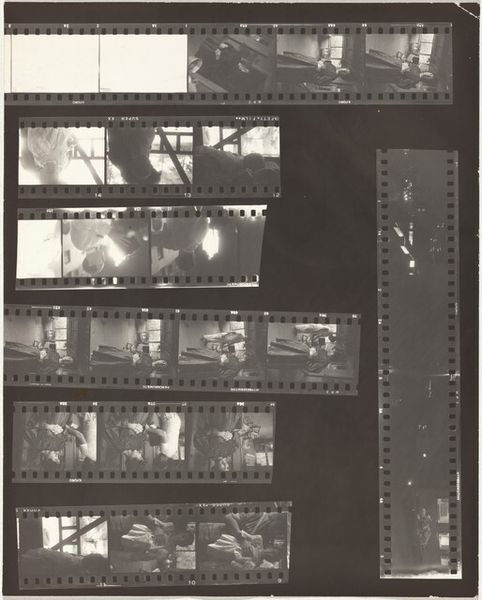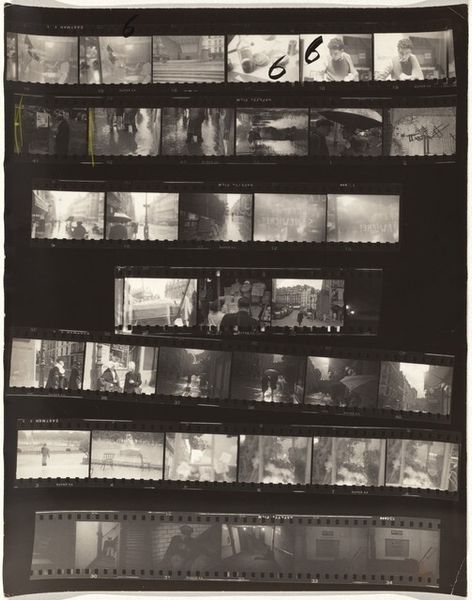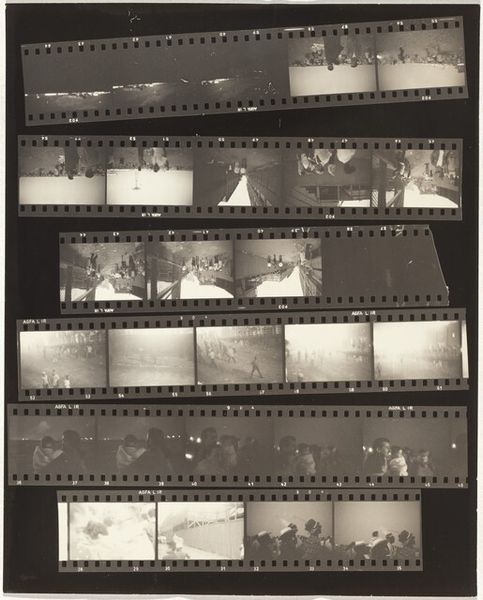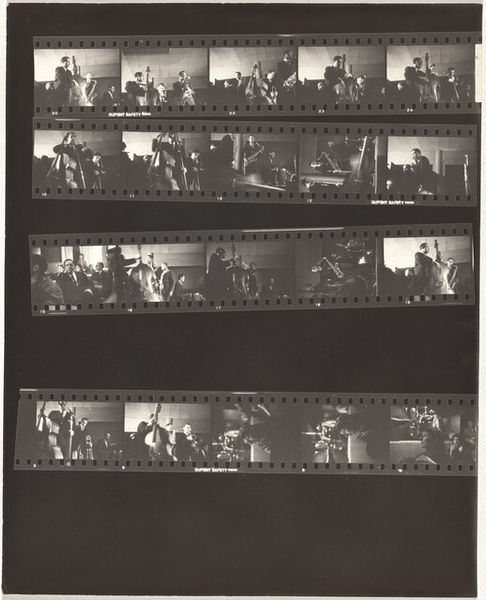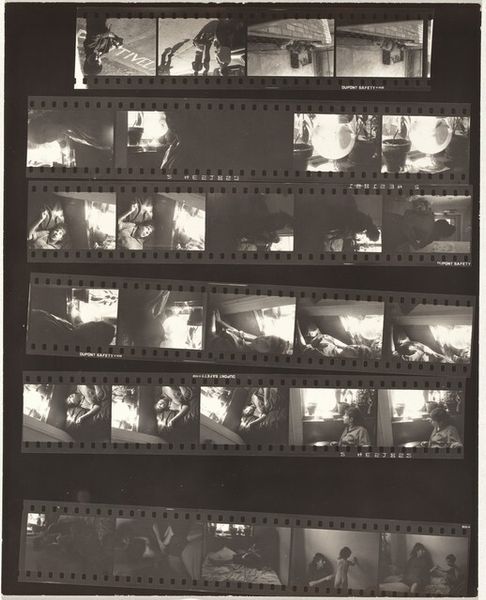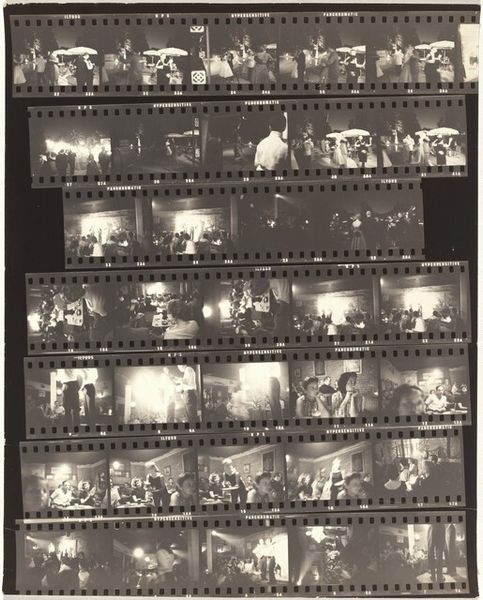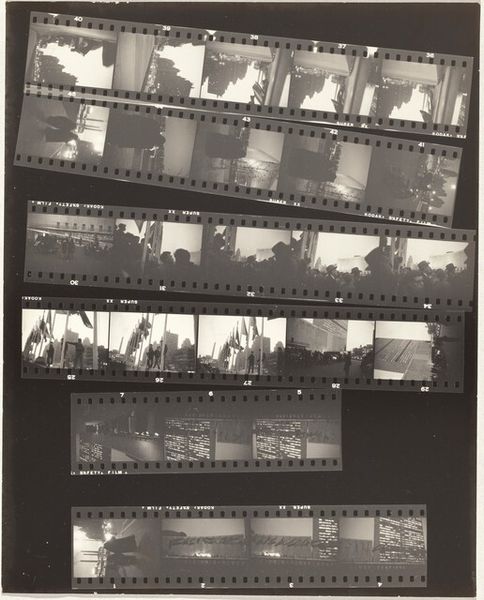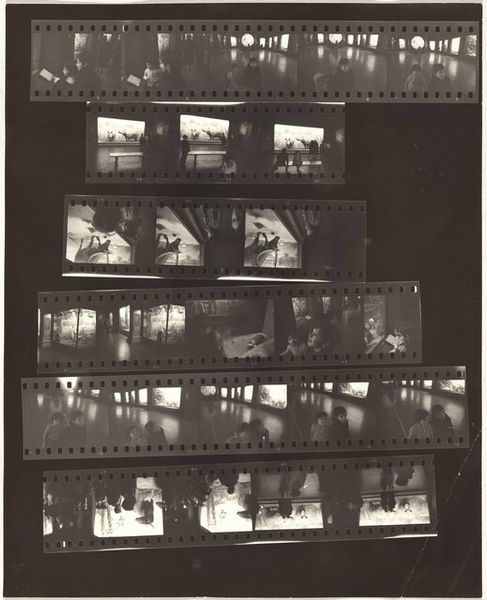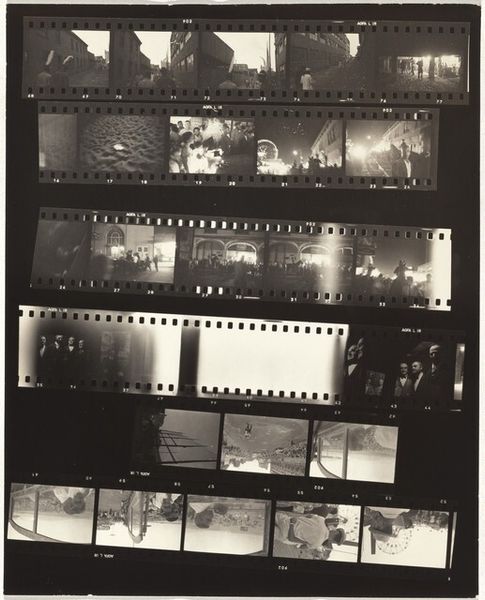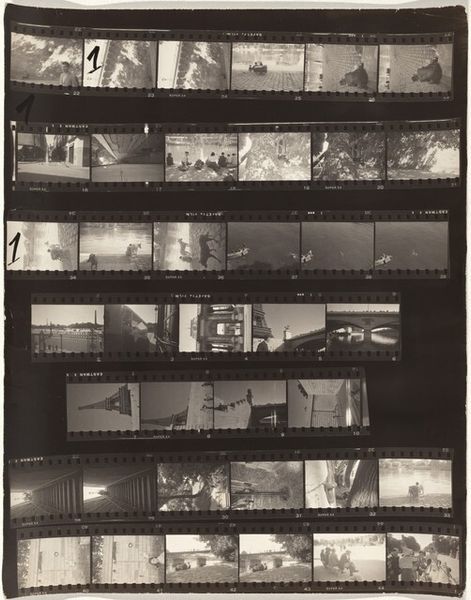
photography, gelatin-silver-print
#
portrait
#
photography
#
photojournalism
#
gelatin-silver-print
#
monochrome photography
#
pop-art
#
monochrome
Dimensions: overall: 27.9 x 21.7 cm (11 x 8 9/16 in.)
Copyright: National Gallery of Art: CC0 1.0
Curator: Here we have Robert Frank's gelatin silver print, "Allen Ginsberg and Peter Orlovsky—Kansas City 9," dating back to 1966. It’s presented as strips of film. Editor: Immediately, I'm struck by its gritty, documentary feel and the monochrome palette. There's something quite raw about it, as if we're intruding on a private moment. Curator: Precisely. Frank was known for capturing the pulse of American life, particularly those on the margins. The film strips format disrupts conventional photographic representation. The physical nature of the material makes it all the more affecting, doesn’t it? Editor: Indeed. The images, in their segmented sequence, create a fractured narrative. In terms of visual semiotics, it suggests a non-linear interpretation, almost like fragmented memories. What resonates for me is the sense of Beat Generation freedom it conveys. The light is raw; the grain palpable, a tangible link to their reality. Curator: It's also a significant artifact of cultural memory. Ginsberg and Orlovsky, icons of counterculture, are depicted with a vulnerability that challenges their public personas. This almost casual glimpse transforms into an icon for free expression. Frank captured many strips like these that are really intimate! Editor: It certainly invites reflection on how we construct narratives around cultural figures. What does this glimpse behind the scenes really tell us? Is it demystifying or adding to their legend? I see not only cultural icons but fellow travellers around a table – humanised and relatable. The stark contrasts—heavy blacks and piercing whites—create drama. Curator: Considering the scale and materiality adds another layer. The gelatin silver print allows for such rich tonality. These weren’t highly processed prints and often remained quite unadorned on the printed surface itself. Editor: So, as we walk away, it's hard not to ponder the power of seemingly off-the-cuff photography to capture an era’s soul and the intimate interactions of the time’s most significant figures. Curator: An incredibly personal snapshot, indeed. Its deliberate lack of polish allows a more profound encounter with both artist and subject, offering many complex interpretations.
Comments
No comments
Be the first to comment and join the conversation on the ultimate creative platform.
